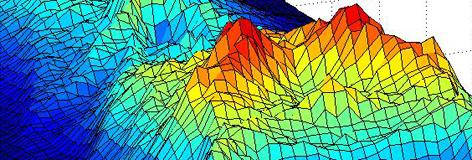CNR-IOM Italy

 IT
IT
CNR-IOM
www.cnr.iom.it
Organization profile:
The CNR-02 team belongs to the new born institute CNR-IOM, which among others includes the Laboratory SLACS CNR-INFM, located in Cagliari. SLACS consists of several groups, working in fields such as micro/opto-electronics and photonics, biomaterials, drug design, novel superconducting and advanced structural materials. More information can be found at www.iom.cnr.it and www.slacs.it .
Leader:
Sandro Massidda is a full professor at the University of Cagliari. His research activity includes the calculation of structural, electronic, superconducting and magnetic properties of solids. He recently studied superconducting pnictides, conventional electron-phonon superconductors, and magnetic materials. The publication list includes around 135 papers. The work of SM has been cited about 3500 times, with a Hirsch index h=32. He gave invited talks at 10 international conferences/workshops since 2005, including the 2007 APS March Meeting. He was/is local coordinator of three National Research Projects in the last years.
Expertise:
The CNR-IOM team involved in this project has a long-standing experience in theoretical investigations on condensed matter physics. Its members, both in Cagliari and in L’Aquila, are internationally acknowledged experts in the study of electronic, structural, dynamical, superconducting and magnetic properties of solids. In collaboration with the group of Prof. E.K.U. Gross in Berlin and at the Max Planck Institute of Halle, they recently contributed to the development and application of density functional theory for the superconducting state (SCDFT). This theory allowed, for the first time, a thorough and totally ab-initio description of the superconducting state in electron-phonon superconductors. The theorists involved master different complementary expertise in ab-initio calculation methodologies such as density functional theory (DFT, both within pseudopotential and all-electron schemes) and beyond DFT. Based on these theories they get accurate predictions on quantities directly comparable with experiments (e.g. structure, density of states, transport properties, magnetization, magneto-resistance and XAS spectra).
Specific facilities: Codes for electronic structure calculations: VASP (pseudopotentials and PAW), Quantum Expresso (pseudopotentials, includes linear-response, electron-phonon coupling), WIEN2k, FLAIR, ELK (all-electron Full-potential LAPW). Superconducting density functional theory (SCDFT) code. Codes for the calculation of transport properties.
Computational facilities: The Physics Department of Cagliari owns a cluster of 100 Server 1U IBM System x3455, 2 CPU dual-core AMD Opteron 2218 2.6 GHz, RAM 8 GB, HD 250 GB, plus 20 Server 1U SuperMicro 6015TW-INF, 4 CPU quad-core Intel E5450 3.0 GHz, RAM 32 G.
Personnel assigned to this project:
Cagliari University: Sandro Massidda (www.dsf.unica.it/~sandro), team leader, Fabio Bernardini. L’Aquila University: Gianni Profeta
Main tasks in SUPER-IRON:
- ab-initio calculation
- Models of superconducting properties




 Based on the Exchange of Letters, JST and EC DG RTD have agreed to establish a new scheme for coordinated funding of Japanese-EU coordinated research projects (see European Community press release IP/09/1844). After consultations between JST and EC DG RTD, “Superconductivity” has been selected as the field of research for the coordinated funding scheme.
Based on the Exchange of Letters, JST and EC DG RTD have agreed to establish a new scheme for coordinated funding of Japanese-EU coordinated research projects (see European Community press release IP/09/1844). After consultations between JST and EC DG RTD, “Superconductivity” has been selected as the field of research for the coordinated funding scheme.